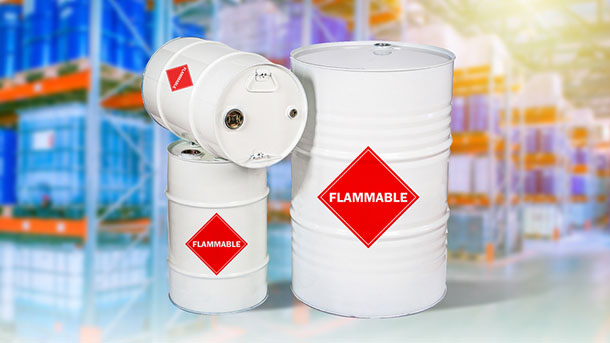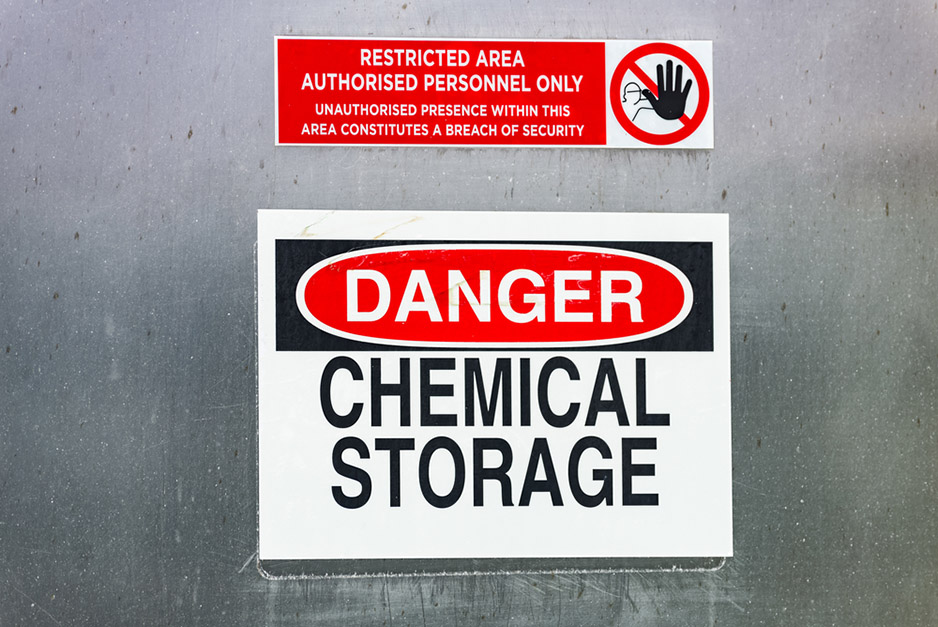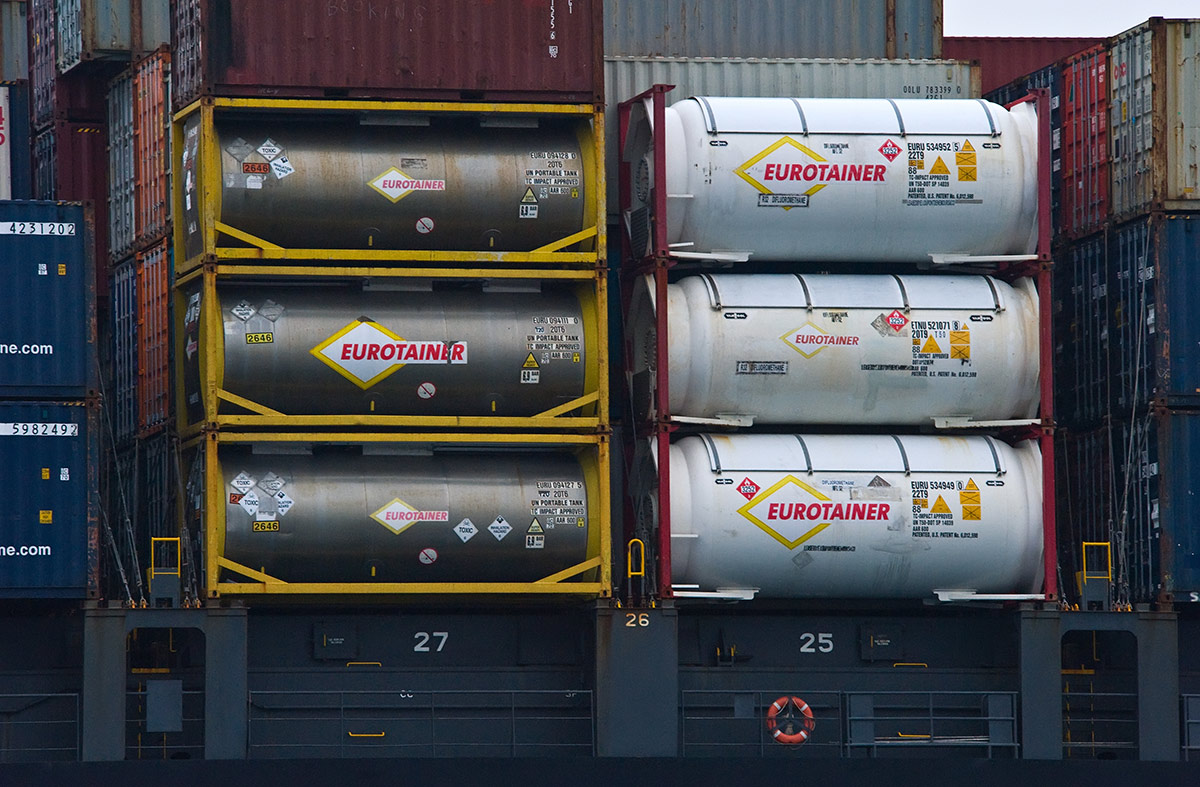Source: noomcpk/Shutterstock.com
Gasoline is integral to the daily operations of companies across the U.S. Whether you are a small or large business, you must learn how to store gasoline safely. It’s a flammable substance that demands cautious handling.
Key points to consider:
- Gasoline breaks down plastic, and storing gasoline in plastic containers can cause leaks.
- Steel drums are the best option for the long-term storage of gasoline.
- Mixing gasoline with a stabilizer helps maintain the quality of gasoline for longer.
Plastic jerricans are a popular, low-cost storage option for different types of liquid. However, when storing gasoline for long periods, steel drums are a better choice. Over time, gasoline can permeate and break down plastic, causing dangerous leaks in your warehouse while ruining your fuel.
When learning how to store gasoline, ensure you adhere to the safest methods for storage and handling. If you are involved in the shipment of hazardous materials such as gasoline, you must correctly categorize them.
Why You Shouldn’t Use Plastic Drums
Plastic drums are frequently made of high-density polyethylene or HDPE. Containers such as gas cans are made from this material, so many people think it’s a suitable choice. However, gasoline breaks down HDPE, causing dangerous leaks.
One of the safest options for storing gasoline is using steel shipping drums. Gasoline doesn’t affect steel in the same way it affects plastic. Also, steel is a highly durable material that you can use to store gasoline for many years safely.
You can combine 55-gallon steel drums with smaller plastic jerricans. A high-quality plastic or polypropylene jerrican is an excellent option for carrying gasoline on short trips. For maximum security, combine steel drums for long-term storage with small jerricans for daily use and transportation.
Use Hazmat Stickers to Safely Ship Hazardous Materials
Tips on Using Steel Drums for Storing Gasoline
When learning how to store gasoline in 55-gallon drums, note that you should mix a fluid stabilizer with the gas if you plan to keep it for more than a year. Volatile compounds in gasoline evaporate quickly, causing what’s known as “stale gasoline.”
When gasoline starts to evaporate, it doesn’t burn as well. Very old gasoline that has lost a lot of compounds through evaporation may harm your engine. Stabilizers prevent gasoline from going bad.
You should also make sure the steel drum is kept away from water leaks because water could corrode the drum and damage it. As long as you keep the drum clean and dry, there should be no problems.

Source: FOTOGRIN/Shutterstock.com
Properly Categorizing Hazardous Material
Take a look at a hazmat classification chart to understand how you should label hazardous material. When transporting gasoline, you should properly label your drums to avoid problems. Gasoline is a flammable liquid and a class 3 hazardous material.
Labeling hazardous material is vital in case of an emergency. If there’s a spill or leak, correct labels allow emergency personnel to know which material they are dealing with. Accurate labeling of hazardous materials ensures the safety of all people involved in the transportation process.
Use a Tested Hazmat Box for Maximum Safety
Necessary Safety Precautions When Storing Gasoline
When storing gasoline, it’s essential to keep the containers tightly sealed and away from any potential open flame and heat sources. The best way to store gasoline is at room temperature and in a well-ventilated area.
Some people like to store drums vertically and others horizontally. It doesn’t matter which way you prefer, but when storing drums vertically, you’ll need a non-electric fluid drum pump to take out gasoline when you need it. You can attach spigot valves on horizontally stored drums to easily dispense the fuel.
Either way, the most important thing is that drums need to be equipped with vents. Gasoline readily expands in hot weather and contracts in cold weather. During this process, it creates certain vapors that increase pressure inside the drum. Vents release this pressure and prevent explosions.

Source: FOTOGRIN/Shutterstock.com
Steel Shipping Drums for Fuel Storage
At Air Sea Containers, we can help you safely transport hazardous materials such as gasoline. We offer drums with ultra-durable carbon steel and which meet all relevant gasoline regulations. For gasoline transportation and storage, consider our 55-gallon closed head steel drum.
These high-quality drums include a screw cap and a ¾ vent cap, helping equalize the pressure inside the drum while preventing unsafe gasoline vapor build-up. If your storage facility is humid or cold, you’ll benefit from the rust protector coating on our drums, increasing their durability in these conditions. We offer different sizes and various accessories to combine with the steel drums to meet your storage needs.
Safely Transport Your Goods with Air Sea Containers
We are a family-run business with over 20 years of experience dealing with the transportation of dangerous goods. We specialize in Hazmat and hazardous goods packaging and have worked with many businesses worldwide, including Fortune 500 companies. Air Sea Containers can help you transport dangerous goods safely and efficiently. Feel free to call us at (866) 596-9448 or contact us online to discuss your gasoline storage needs.











